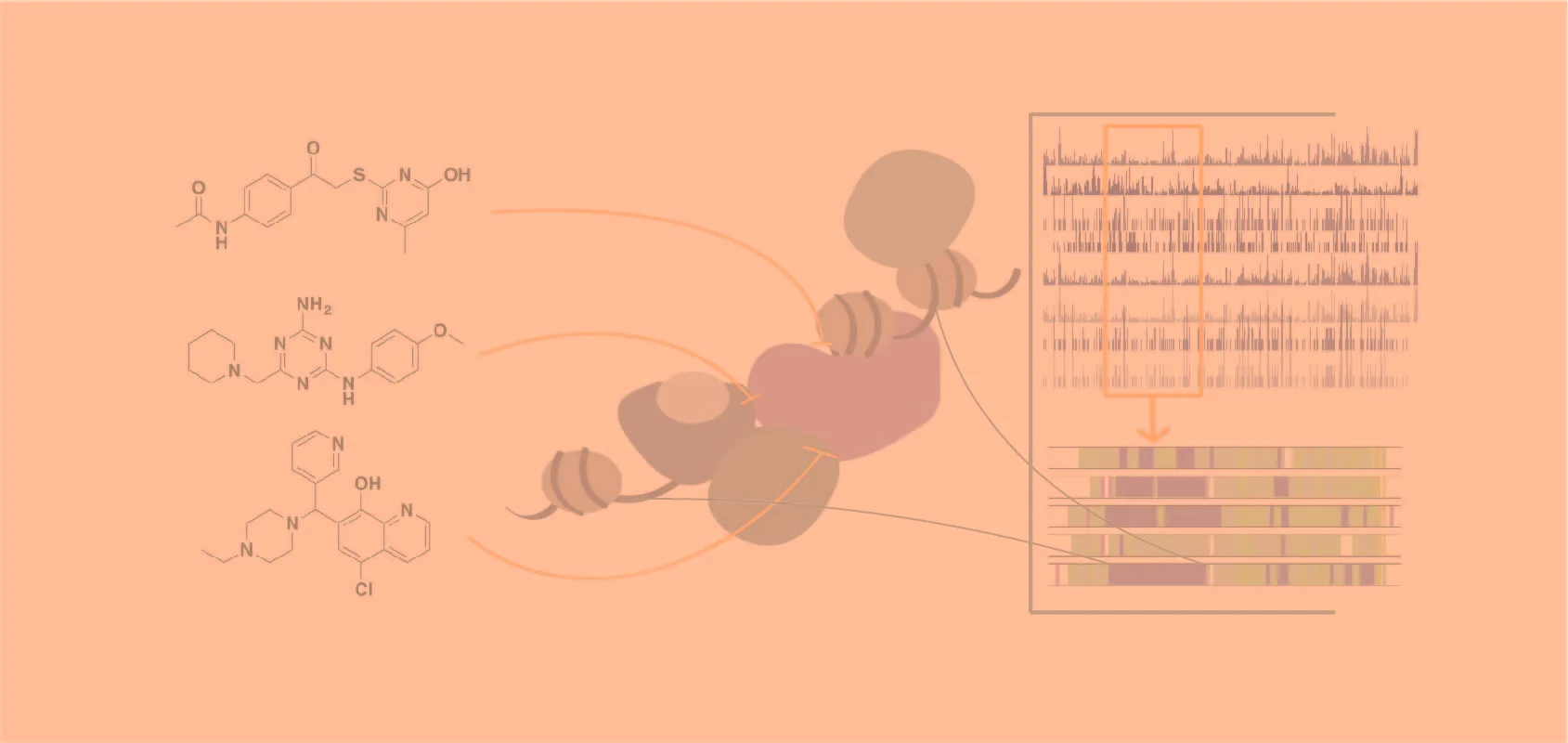The Koehler laboratory has a longstanding interest in developing new technologies to discover and characterize protein-small molecule interactions, with emphasis on technologies that enable ligand discovery for recalcitrant proteins. Specifically, we focus on developing small-molecule probes of transcriptional regulators, emphasizing transcription factors deregulated in cancer, and evaluating them in a cellular setting. To achieve this goal, we have developed novel discovery platforms for challenging proteins or proteins of unknown structure and function. We have developed a general approach to small-molecule probe discovery for transcription factors by coupling a high-throughput binding assay involving small-molecule microarrays (SMMs) with target-specific functional assays involving transcriptional and cellular readouts. We also use our synthetic chemistry know-how to confirm on-target bimolecular interactions, as well as to optimize compounds into chemical probes or leads for medicinal chemistry. Representative projects are described below.
c-Myc activation is one of the most common oncogenic events in human maligancies. In normal cells, the Myc family of transcription factors regulates a diverse set of cellular processes including cell growth, proliferation, apoptosis, metabolism, differentiation, self-renewal, and angiogenesis. It is estimated that c-Myc regulates expression of more than 15% of all genes and is therefore considered to be a master regulator. c-Myc deregulation may result in uncontrolled cell proliferation, alterations in the apoptotic pathway, genomic instability, escape from immune surveillance, growth factor independence, and immortalization. c-Myc is one of the only oncogenes for which true oncogene addiction has be demonstrated in vivo. Inactivation of c-Myc using small molecules that directly target the protein or that disrupt Myc-associated proteins may be an effective approach to treating a broad swath of human cancers in which the oncoprotein is aberrantly active and a driver of the malignant phenotype. We have identified several small molecules that directly bind to c-Myc or heterodimer partner Max and inhibit Myc-driven transcription in cells. Our group is engaged in a variety of biophysical and cellular studies aimed at understanding the mechanism of action for these compounds. We have also undertaken chemistry efforts aimed at probe optimization. We collaborate with the laboratory of Professor Benjamin Ebert of Brigham and Women’s Hospital, Professor Dean Felsher of Stanford Medicine, and Professor Charles Lin of Baylor College of Medicine on this project.
ETS transcription factors are a ubiquitous class of factors that regulate numerous cellular processes including differentiation, cell cycle control, proliferation, migration, apoptosis, and angiogenesis. The family is defined by a highly conserved winged helix-turn-helix DNA-binding domain. Several ETS factors have been implicated in human malignancies and are commonly involved in oncogenic chromosomal translocations (e.g. TMPRSS2-ERG in prostate cancer, EWS-FLI1 in Ewing sarcoma). We recently screened several ETS family members including ETS1, ERG, and ETV1 for direct small-molecule binders using SMMs. We are working collaboratively with the laboratories of Professor Todd Golub, Professor Levi Garraway, and Professor Bill Hahn at Dana-Farber Cancer Institute to characterize these direct ligands in a broad swath of biophysical and phenotypic studies, including high throughput gene expression assays. Finally, we have also extended the SMM approach to screen for small molecules that selectively target oncogenic fusion proteins involving ETS factors over the non-oncogenic unfused counterparts.
